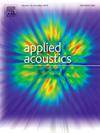同步PCG和ECG的stft评价冠心病严重程度
IF 3.4
2区 物理与天体物理
Q1 ACOUSTICS
引用次数: 0
摘要
心电图(ECG)和心音图(PCG)信号分别反映心脏的电活动和机械活动。利用ECG和PCG信号对冠心病严重程度进行无创评估,不仅减轻了医生的负担,释放了医疗资源,而且是一种经济实惠的评估手段,减轻了患者的经济负担。本研究的目的是提供一个基于ShuffleNet架构的双输入轻量级模型来评估不同严重程度的冠心病。未确诊冠心病合并胸痛患者、轻度冠心病患者和重度冠心病患者的区分不依赖于人工提取ECG和PCG的波形特征。心电和心电信号被预占有并转化为短时傅立叶变换谱图(STFTs)。本文提出的模型在五重交叉验证中进行了训练,并与六种常见的深度学习(DL)模型进行了性能比较。该模型的准确率为94.27%,精密度为94.37%,灵敏度为94.22%,F1评分为94.25%。在冠心病不同严重程度分类任务中的效度和信度验证。与其他经典模型相比,本研究提出的模型具有较低的敏感性和变异性,具有较强的鲁棒性。本文章由计算机程序翻译,如有差异,请以英文原文为准。
Assessment for coronary heart disease severity by STFTs from synchronized PCG and ECG
Electrocardiogram (ECG) and phonocardiogram (PCG) signals reflect the electrical and mechanical activities of the heart, respectively. Noninvasive assessment of the severity of coronary heart disease (CHD) using ECG and PCG signals not only reduces the burden on physicians and frees up medical resources, but also serves as an affordable means of assessment and reduces the financial burden on patients. The purpose of this study was to provide a dual-input lightweight model based on the ShuffleNet architecture to assess CHD of different severity. The distinction between patients with Unconfirmed CHD with chest pain, patients with mild CHD, and patients with severe CHD was achieved without relying on the manual extraction of waveform features of ECG and PCG. ECG and PCG signals were prepossessed and transformed into short-time Fourier Transform spectrograms (STFTs). The proposed model in this study was trained in a five-fold cross-validation and the performance was compared with six common deep learning (DL) models. The proposed model in this study demonstrated an accuracy of 94.27%, precision of 94.37%, sensitivity of 94.22%, and F1 score of 94.25%. Validation of its validity and reliability in the task of classifying CHD at different levels of severity. The model proposed in this study exhibited lower sensitivity and variability compared to other classical models, indicating its strong robustness.
求助全文
通过发布文献求助,成功后即可免费获取论文全文。
去求助
来源期刊

Applied Acoustics
物理-声学
CiteScore
7.40
自引率
11.80%
发文量
618
审稿时长
7.5 months
期刊介绍:
Since its launch in 1968, Applied Acoustics has been publishing high quality research papers providing state-of-the-art coverage of research findings for engineers and scientists involved in applications of acoustics in the widest sense.
Applied Acoustics looks not only at recent developments in the understanding of acoustics but also at ways of exploiting that understanding. The Journal aims to encourage the exchange of practical experience through publication and in so doing creates a fund of technological information that can be used for solving related problems. The presentation of information in graphical or tabular form is especially encouraged. If a report of a mathematical development is a necessary part of a paper it is important to ensure that it is there only as an integral part of a practical solution to a problem and is supported by data. Applied Acoustics encourages the exchange of practical experience in the following ways: • Complete Papers • Short Technical Notes • Review Articles; and thereby provides a wealth of technological information that can be used to solve related problems.
Manuscripts that address all fields of applications of acoustics ranging from medicine and NDT to the environment and buildings are welcome.
 求助内容:
求助内容: 应助结果提醒方式:
应助结果提醒方式:


